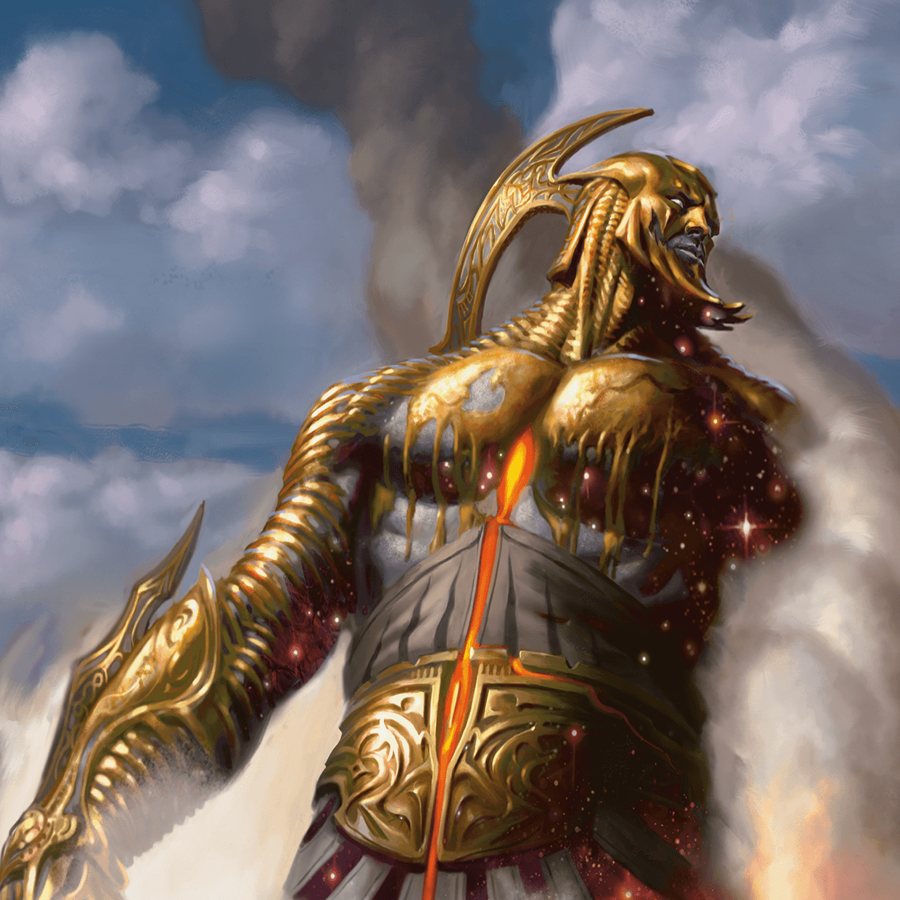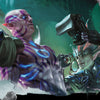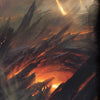How to Create a D&D Campaign in 5 Easy Steps

Written by Luke Hart
Every dungeon master wants to run an amazing campaign for their players. However, you might not know where to start. Creating an entire D&D campaign can be a daunting prospect.
However, it’s really not that bad, and today we’ll walk through the five-step campaign creation process that I use to prepare my D&D and other tabletop RPG campaigns. If you have any questions about this topic or anything else dungeon mastering, I have live Q&A streams almost every Thursday on my YouTube channel.
Now, before we jump in, I want to let you know about our Lairs & Legends 2 Kickstarter, which recently launched. If you’re a busy game master looking for professional 5th edition resources you can drag and drop into your games, you won’t want to miss this.
With Lairs & Legends 2, you’ll get two massive books filled with 5th edition adventures spanning levels 1 to 20, over 100 new monsters, puzzles, traps, stand-alone encounters, revamped rule sets for naval combat, rewards and recognition, insanity, illness and diseases, and more.
Watch or listen to this article by clicking the video below.
Step 1: Get Inspired
The very first thing you need to do is to come up with the core idea for your campaign—the central conflict or problem or dilemma that the characters will spend several levels and months or even years of gameplay trying to resolve. Coming up with that idea can often be the most challenging part of campaign creation. I mean, awesome ideas don’t just come from nowhere; no, they almost always are inspired by something.
Where you find your inspiration doesn’t really matter. You may get it from a movie or video games, but I personally get it from reading setting books and monster books. For instance, when I was brainstorming ideas for my Thieves Abound Pathfinder 2 campaign, I was reading the D&D fifth edition Eberron campaign setting. See, I love Eberron, and I knew I wanted to run my PF2 game there, but I didn’t know where or what the campaign would even be about. While reading up on all the different nations of Khorvaire, for some reason, the Mror Holds stuck out to me. I liked the idea of the dwarves delving too deep underground and opening up portals to Khyber and unleashing hordes of aberrations and daelkyr.
For other campaigns, my primary inspiration came from flipping through monster books such as the Monster Manual or Tome of Beasts until I found some baddies I thought were really cool and would enjoy running a campaign around.
No matter how you go about getting inspired, this important point remains: be sure that whatever you settle on for your central campaign idea is something that inspires you and makes you excited to run the game. If it doesn’t get you jazzed up, chances are you’ll lose the desire to run the campaign and it will fizzle out sooner or later.
Step 2: Create a Central Campaign Conflict
Creating conflict, drama, and tension is the heart of being a game master—it’s also the heart of any good campaign. So, once you have your sources of inspiration, that idea that excites you, you need to turn it into a conflict that your players can spend an extended period of time trying to resolve.
In the case of my Thieves Abound campaign, the central conflict is that a powerful daelkyr known as Dyrnn the Corrupter is gathering power in the underworld below the Mror Holds and seeking to conquer the surface. To that end, his aberration minions are raiding dwarven strongholds and stealing ancient daelkyr artifacts and other objects of power they can use to gain strength. My players’ characters work for House Kundarak, whose vaults and banks were hard hit by these raids, and they are tasked with figuring out who is behind the robberies and stopping them.
To develop a strong central campaign conflict and set up a solid scenario, all you really need is a villain and something they are attempting to do that creates a problem or conflict in the game world. You’ll ask questions like: What are the antagonists? What do they want? What are they doing to get it? How does this create conflict in the world that the characters have to resolve?
Now, of course, the Big Bad you select should be a powerful entity since the players will probably confront that villain at a higher level. And whatever they are up to should be large enough in scale that the problem takes an entire campaign and several levels of play to resolve. If you pick a pack of kobolds trying to take over the miller’s basement, well, that’s OK for one adventure but not a campaign. You need something bigger and grander for a campaign. A clan of dragons taking over the city of Sharn by buying up property and intimidating owners to sell—now that might serve as good fuel for an entire campaign! And the kobolds in the miller’s basement might be working for a dragon underling.
The second part of setting up the central campaign conflict is determining how that conflict intersects with the players’ characters. OK, sure, the dragon clan is trying to take over Sharn, but why should the adventuring group care? Are they all from Sharn? Do they know people whose businesses have been the targets of hostile corporate takeovers? Are they working for a Dragonmarked House whose interests are being stepped on by the dragon clan?
In my Thieves Abound campaign, I set up the characters with House Kundarak as their patron, and they were then tasked with figuring out who was behind all the robberies in the Mror Holds. You see, the last thing you want is for the players’ characters to just shrug their shoulders and walk away from the campaign’s central conflict and go do something else. So, if you can bake a character’s motivation into the campaign setup, you’ll position yourself for better success.
However, all of this is for naught if your players don’t want to play your stinking campaign. And this leads us to step 3.
Step 3: Pitch the Campaign to Your Players
After I created the central campaign conflict for my Thieves Abound campaign, I sent all of my players an email. I laid out the basic premise of the campaign and listed all the campaign features—doing so in a way that didn’t give away spoilers, of course. Now, if you’d like to see exactly what I sent my players, you can grab my Sample Campaign Pitch.
Anyway, the point of this email was to tell them about the campaign I wanted to run and see if they wanted to play it with me. You see, my goal was to get buy-in from my players; I wanted them to agree to the premise of the campaign. If I could get that, well, it would drastically increase the chances of a successful campaign by ensuring that the players were interested in playing. If your players dislike your basic campaign premise, well, then you are bound to have problems.
Even though my pitch to my players was rather long, you might try to put it into just one sentence such as, “I want to run a dark fantasy game with a cosmic horror vibe that pulls in a lot of the weird, aberration-type monsters, where the characters will have to make difficult moral decisions.” And you could even give them more than one pitch to see which one resonates most with your players.
In my case, everyone was cool with the campaign pitch. However, if you have a player or two who expresses reservations, ask for specific feedback. Ask them if there is something about the campaign pitch they don’t like or if there is something they would like to see featured in the campaign. Then, based on that feedback, you could probably tweak a few things so the player would be happy to play the campaign.
Of course, it’s possible that a player’s desires or expectations are so far off from your campaign premise that no amount of tweaking will get them onboard. Like, you’d basically have to run a different campaign. At that point, you could potentially do that, but I personally wouldn’t. I’m willing to make small concessions, but at the end of the day, if I’m not running a campaign that excites me, well, I’m not running a campaign—especially if all of the players but one are OK with my premise. So, at that point, you have a couple of choices: one, the player can still play, but the campaign just won’t be exactly what they want. Or, two, the player can find a different campaign to play that more fully meets what they are looking for. There is no right answer here, and it’s a sucky spot to be in regardless. However, if you let yourself get roped into running something you don’t enjoy, you’ll probably regret it—and my bet is that the campaign will likely fizzle out fairly fast.
Step 4: Plan the Campaign at a High-Level
Once you have buy-in from your players, the next step is to design your campaign from a mile-high viewpoint. You’ll develop some details, but not too many. Everything right now is still “big picture.”
There are two elements or “arcs” of a campaign that can be developed: your central campaign arc and the personal character arcs. The central campaign arc is the main part of the campaign that revolves around the central campaign conflict you already fleshed out a bit. And personal character arcs are parts of the campaign based on individual characters’ backstories or goals that somehow intersect with the main campaign.
Let’s talk first about creating your central campaign arc. Now, you already have the main idea, the Big Bad, and what they’re up to in the world. What you want to do now is flesh this idea out a bit more. A campaign comprises more than one adventure. In fact, as the characters advance from level 1 to 12 or 15 or even 20—depending on how long you plan to run your campaign—they are going to chew through perhaps dozens of individual adventures. So, it’s time to start considering what those adventures might be about.
There are two ways you can go about this. First, you might find minor villains who are lieutenants or underlings of the main Big Bad that could serve as antagonists at the lower levels, middle levels, and so on as the characters gain levels. You could determine the different creatures that work for the underling villains and more or less map out the various bad guys characters will likely encounter. Then you flesh out at a high level what each of those underling villains is doing in the game world that contributes to the main Big Bad’s overall goal. The idea here is to create a rough roadmap of the adventures the group will go on as they progress through the campaign. Essentially, they will move from underling villain to underling villain, stopping each as they slowly work their way up to confronting the main Big Bad. Of course, as you’re selecting underling villains and their minions and creating this roadmap, you’ll need to keep an eye on monster challenge rating and levels to ensure they are of the appropriate strength for group’s level.
The biggest drawback to this method is that, one, it requires a lot more planning and work; two, it doesn’t account for things that might change in the middle of the campaign. You might do tons of planning only to throw it out after a few game sessions because something big changed. Thus, my preference is to handle campaign planning a bit differently.
The second method, which I usually follow for my campaigns, is that after you have the high-level campaign premise, only develop a super rough idea of what adventures might happen and what underling villains the group might encounter. Then, just develop one adventure at a time and see where the wind blows you.
For instance, in my Thieves Abound campaign, I wanted to incorporate more than just daelkyr and aberrations from the underground and Kyber. I also wanted to give my players the opportunity to travel across Khorvaire and explore more than just the Mror Holds. So, I worked agents from Droaam into the plotline. I imagined that the Daughters of Sora Kell also had an interest in some of the daelkyr artifacts in the Mror Holds and had sent their own goblinoid spies there to pursue their interests. From this, I created the first adventure my Thieves Abound players went on. Eventually, they will likely need to travel to Droaam to put a fork in matters. However, that was really the extent of my campaign planning at that point. From then on, I was just playing it by ear, and I continue to do so since we are currently only level 5 and still playing.
Whichever approach you take is up to you and what you feel best fits your needs and personality. Either works, though bear in mind that the more your plan out details, the more you will likely to have to change them during the campaign.
When you’re doing your high-level campaign planning, here are some other things you may want to consider. What kinds of locations, terrains, and climates do you want to feature? Are there specific religions or deities that you want to include? What about politics or different government types or NPCs that you want to spotlight?
The second type of arc I mentioned is the personal character arc. These are adventure arcs based on a character’s backstory or personal goals. They are usually short adventure arcs, though they can be longer, of course. The idea here is that each character could potentially have its own short adventure arc woven into the main campaign. Basically, you pull elements from character backstories to create adventures customized for the characters; then, because we are running group games, the entire group would go on those adventures.
Now, ideally, you’ll find a way to tie the character arc into the main campaign arc so it makes sense for everyone to go do the thing. But you don’t have to do that. In fact, my character arcs are often unrelated to the main campaign arc.
If you use character arcs, the best way to implement them is to weave those adventures among the main campaign adventures. That means the group alternates between main campaign adventures and character arc adventures. Maybe they do a few adventures to progress the main campaign and then do a character arc adventure, then go back to the main campaign, and so forth. There is no “right” way to do this, just do what suits the group.
That said, you don’t have to use character arcs at all in your campaign. In fact, I probably won’t be for my Thieves Abound campaign. That doesn’t mean I’m not using backstories in the campaign; it just means I’m choosing to integrate them in a different manner. If you want to learn more about how to use character backstories in your campaigns, check out my video on how to use a PC backstory.
Step 5: Create Your First Adventure
Now that your high-level planning is done, all that’s left is to create your first adventure. Now, how to create an entire adventure is out of scope for this article, but as luck would have it . . . I have an entire playlist of videos that deep dive into how to create an adventure. Feel free to check that out when you’re ready for that step.
Do You Need a Central Campaign Arc?
Strictly speaking, you don’t actually need a central campaign arc to run a campaign, but at that point, we’re probably talking about either a Sandbox game or a West Marches-style game. I’m going to deep dive into sandbox games in the future, but this is the basic idea: The GM presents the characters with a central location and several surrounding “points of interest,” each of which is the site for its own adventure. The players decide which point of interest they want to explore next. The GM prepares that adventure. And then you wash, rinse, and repeat. You can also plant more adventure hooks inside of the adventures, and when the characters find one they really want to sink their teeth into, that becomes the campaign’s “through line.”
Lairs & Legends 2 - The Definitive 5e Resource Anthology
Running awesome games with in-depth lore, deadly traps, and terrifying monsters doesn’t have to take hours of prep! Lairs & Legends 2 and Loot & Lore 2 have everything you need to cut your prep time in half while preserving your campaign and your story! These two massive tomes are designed to let you plug-and-play encounters, monsters, magic items, brain-burning puzzles, and more easily into your game!
Or you’ve just needed that one really cool thing for your game, but it’s just not coming to you?
Both books contain hundreds of pages of 5e game master resources, carefully crafted by a team of expert game masters to be both exciting to run and easy to use. You don’t need to parse through dense paragraphs trying to find something useful; just take a quick glance through it and you’ll have everything you need at your fingertips.
Never again feel like you’re stuck with the chore of prep so you can finally run your game: pick up Lairs & Legends 2 today.
-
Posted in
Game Master How-To Articles






